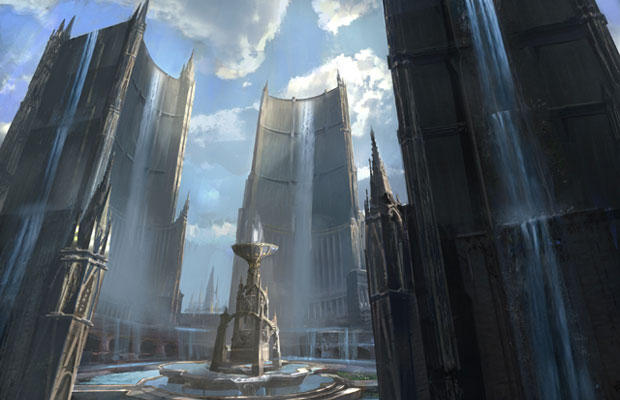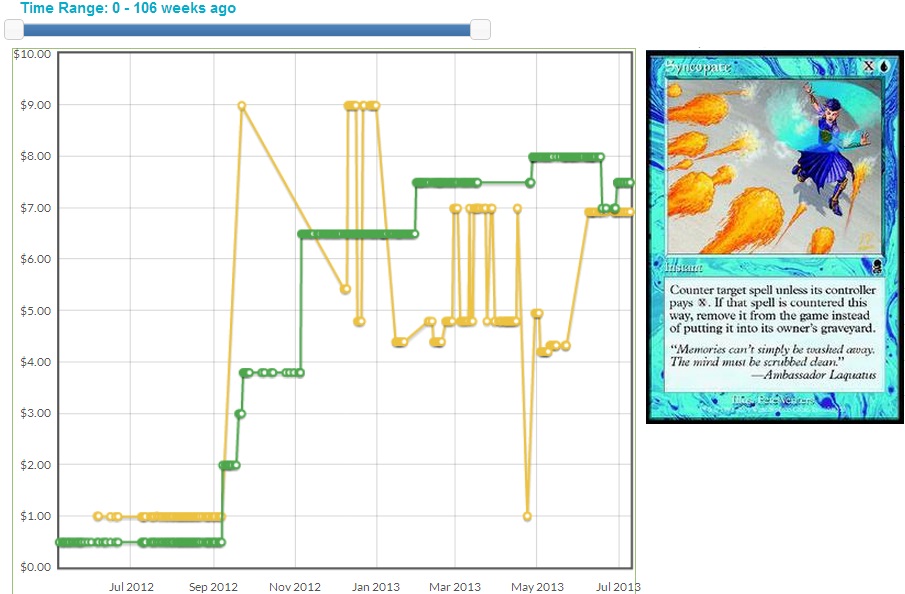Modern Form vs. Function

Last week we examined circumstances that make a card more or less likely to be reprinted. While it is far from being an exact science, it gives us a set of criteria to check against when wondering whether a card will show up again in the near future. The reason for this practice is because reprints very often slice card prices by significant amounts. Remember that both Baneslayer Angel and Primeval Titan each lost over 50% when they were printed in the core set immediately following their debut.
What then, if anything, is safe from the financial bogeyman that is reprints? By virtue of the format’s nature, every card in Modern can be reprinted, and Wizards will not hesitate to do so as they see fit. Given this essential inevitability, we should strive to identify targets whose financial stability is resistant to reprintings, or could even grow in the event that they appear once again.
The best way I’ve found to approach this technique is to think of it as form vs function. Let’s use the Onslaught Fetchlands as an example. When a card is reprinted, it has been reprinted in function – every Magic Card with that specific name – say, Polluted Delta – is immediately legal in Standard and Modern, and new copies of the card will function in old formats just the same.
However, the original form of the card – old-bordered – has not been reprinted. (Probably. When a few Wizards employees asked on Twitter what they would like to see in future Magic sets, I suggested a set that is printed entirely in the old border.) When I speak of function, I speak wholly to the legality of the named card. Any card named Polluted Delta will function as a Polluted Delta, irrespective of which set it’s from, foil or not, judge promo or not, etc etc. When I speak of form, I refer to the physical appearance of the card. There would be a big difference between an English Theros-printed non-foil Polluted Delta and a pack-foil Japanese Onslaught Polluted Delta. (There’s a number on that pack-foil JP ONS Delta at the bottom of the article.)
I’m going to return, as I always do, to supply and demand. Right now, the demand for Polluted Delta is fairly stable. The largest market for the card is people that need it for Legacy, which isn’t going to be too tremendous of a population. You’ve also got some interest from EDH players, but that too is a minimal amount of demand. Now imagine the Onslaught Fetchlands are reprinted in Theros. (They won’t be.) Suddenly every single player playing Standard or Modern needs a playset. Demand has skyrocketed by several thousand percent. Of course, the number of copies in circulation has increased significantly as well. The land would behave just as any other rare land in a fall expansion. After the first month where demand outstrips supply, the cycle would float between $10-20 during its tenure in Standard.
But wait! What about all the old copies of Polluted Delta? Well, they’re legal in Standard and Modern now too. However, there aren’t more copies of those around. There were only X old-border foils before, and after Theros, there are still only X old-border foils in circulation. The function of Polluted Delta has increased drastically, now being legal in the two largest competitive formats. However, this particular form – the old-border foil – has not increased in number at all. Imagine a player like myself. I currently own next to no Onslaught Fetches, and have no real need for them. If they get reprinted in Theros, though, suddenly I need playsets. But I really like old-border foils. So now there is going to be added demand for old-border foils, but the supply hasn’t increased at all. Because Polluted Delta is now playable in so many more places and demand has risen appropriately, and the quantity of the special forms of the card (old-border foil, Judge) hasn’t increased at all, they will actually see a price increase after reprinting.
We saw a similar phenomenon when the Shocklands were reprinted in Return to Ravnica. The original Ravnica-block copies saw a small dip in price, but… that’s it. The Dissension non-foil Hallowed Fountain lost about a third of its value, but it is currently worth double the value of a Return to Ravnica Hallowed Fountain. When you look at foil copies of Dissension Hallowed Fountain though, it gets interesting – the value of the card has increased, and is worth about four times what the RtR foil is worth. The original non-foil Dissension copy only had one real difference from the new one: the art. The rest of the card is basically the same. As soon as you start piling on those form qualities though – border, foil, language, promo, art – the price starts rising accordingly. This isn’t restricted to expensive cards either. Check out what happened to the Odyssey foil Syncopate when it was reprinted in Innistrad.

The basic idea here is that even when a card is reprinted, the fancy versions of the card maintain their value very well. For every way they deviate from the new copy, they do better and better. The only difference between the Dissension Hallowed Fountain and the RtR copy was the art and the set symbol, and even then the Dissension edition is still more expensive. When you start adding in more cosmetic deviations such as borders and foil, the price of old copies is just going to do better and better in the face of reprints. Your goal when looking to trade into safe long-term properties is going to be to find playable cards that if reprinted will look significantly different than the copy you’re looking at in the other kid’s binder.
Oh, and that Japanese pack-foil Onslaught Polluted Delta? I saw one in a dealer case at GP Vegas. $2,200. I had to ask to make sure I was reading the number correctly.
syncopate reprinted in RTR not INN*